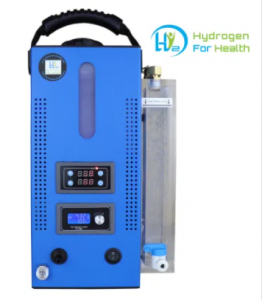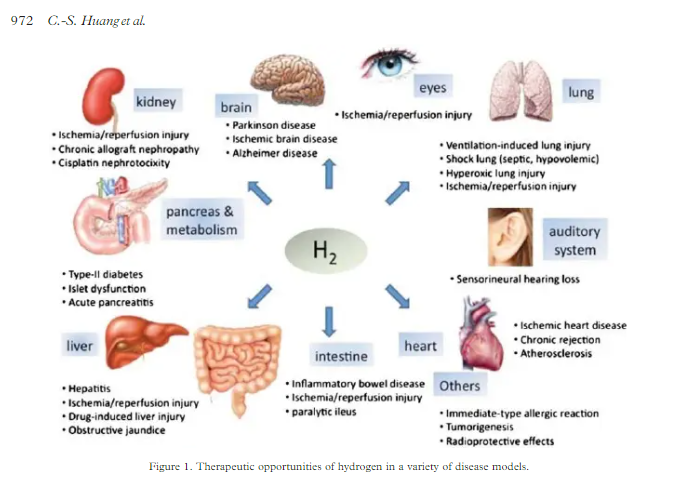Hydrogen Inhalation Therapy Notes
 While you should do your own research, I am enclosing a bit of what I have learned about hydrogen inhalation therapy so far.
While you should do your own research, I am enclosing a bit of what I have learned about hydrogen inhalation therapy so far.
I start with Naomi Whittel
• HYDROGEN – The Anti-Aging Miracle an Interview with Tyler LeBaron – YouTube
• What You Need to Know About HYDROGEN with Dr. Shigeo Ohta – YouTube
I’ve been reading Dr. Mark Sircus from Brazil for years.
• Ultimate Fountain of Youth Protocol
• Hydrogen Inhalation Offers Protection Against Radiation and 5G Oxidative Stress
• Browns Gas for health breathing machine. Hydrogen rich water Dr. Sircus – YouTube
• HydrogenMedicine.info – HydrogenMedicine.Info
• Hydrogen Medicine eBook By Dr. Mark Sircus
• Safest Inexpensive Medicines for the World By Dr. Sircus
Hydrogen For Health (machine)
• Hydrogen Breathing Machine V3
• Browns gas generator for breathing V2 (same as above but V2)
• Hydrogen 4 Health Water And Inhaler Products
• FAQ Frequently Asked Questions. – Hydrogen For Health
Science
• Recent advances in hydrogen research as a therapeutic medical gas
• Hydrogen from inert gas to therapeutic gas
• BioSanctuary Detoxification & Health Recovery Retreat Remarks about Hydrogen
• Hydrogen Is Promising for Medical Applications – MDPI (see below for excerpt)
• Electrolysis of water – Wikipedia
• Alkaline water electrolysis – Wikipedia
• Hydrogen therapy may reduce the risks related to radiation-induced oxidative stress in space flight
Hydrogen Is Promising for Medical Applications – MDPI
by S Hirano · 2020 · Cited by 2 — Many clinical studies have reported that H2 has no safety issue [4–8]. found at: https://www.mdpi.com/2571-8797/2/4/33/pdf
Excerpt (from a PDF download)
2. Oxidative Stress as a Root of Many Diseases
2.1. Hydrogen Can Eliminate the Hydroxyl Radical
The human adult consumes approximately 430 L of oxygen per day at rest. However, various reactive oxygen species (ROS) are formed by imbalance between free radical and reactive metabolic production. The excessive ROS are produced by imbalance, including smoking, atmospheric pollution, ultraviolet or irradiation ray exposure, intense exercise, and physical or psychological stress etc. The oxidative stress is induced by the excessive decrease in endogenous antioxidant capacity, and indiscriminate oxidation elicits harmful effects. ROS are products of oxygen-derived small molecules involved in cellular metabolism, including superoxide anion (O2−), hydrogen peroxide (H2O2), and ·OH, etc. [3]. Among the ROS, the ·OH has about 100 times greater oxidation power than O2− and oxidizes intranuclear DNA, while O2− and H2O2 do not have sufficient oxidation power to oxidize the DNA directly [17]. In addition, since the mitochondria produce large amounts of ROS, they are always affected by ·OH especially, and it causes DNA damage and cellular apoptosis. [3].
Since biologic membranes are quite permeable to H2, H2 is distributed into the cytosol, mitochondria, and nucleus [3]. H2 is an inactive molecule that has no metabolic system in mammalian cells and does not interact with biological substances, but it is a molecule that reacts with ·OH, which occurs inside mitochondria [3]. In addition, because H2 itself is an inert substance and the reaction product of H2 and ·OH is a water molecule, and the production of H2 in the intestine, adverse effects caused by H2 has not been observed in many clinical studies [4–8]. In a recent paper, we proposed that H2 is the only molecule that enters the mitochondria and undergoes a hydrogen withdrawal reaction from the ·OH [18]. Thus, H2 is a molecule entering the mitochondria that can protect cells from cytotoxicity caused by ·OH. It is considered that ideal antioxidant could be H2 because it selectively eliminates ·OH but does not have the chemical reaction with O2−, H2O2, and nitric oxide (NO·) that have physiological roles [3].
2.2. Chronic Inflammation as a Root of Many Disease
Chronic inflammation is at the root of many diseases. It is no exaggeration to say that “chronic inflammation is the source of all diseases” since the chronic inflammation is involved in many diseases. Modern medical treatment can control the acute inflammatory disease, but it cannot control chronic inflammatory disease. Many parts of inflammation are induced by releasing inflammatory cytokines produced by macrophages and neutrophils. Minor but prolonged inflammation can damage the living body and induce the chronic inflammation. Recent studies have shown that mitochondria play an important role in producing the cytokines. It has also been reported that mitochondria-related ROS activate the nucleotide-binding and oligomerization domain-like receptor family pyrin domain-containing 3 (NLRP3) inflammasome, and its stimulation triggers producing inflammatory cytokines [19–28]. It has been shown by some studies that H2 in the various animal models of inflammation could be based on the mechanisms by inhibitions of mitochondrial oxidation and NLRP3 inflammasome activation [29–37]. Therefore, the mitochondrial selective ·OH scavenger such as H2 can block the cascade leading to the activation of the NLRP3 inflammasome.
3. Methods of Hydrogen Ingestion
3.1. Hydrogen Gas Inhalation
H2 is a gas that exhibits tasteless and odorless characteristics. Inhalation of H2 gas is one of the most straightforward therapeutic methods and provides the largest amount of H2 gas in a time-dependent manner compared to other ingestion methods, because the maximum tissue and blood concentrations (Cmax) in H2 gas inhalation are low, while their area under the curve (AUC) is extremely high compared to other administration routes [38,39]. It has been considered that H2 gas will burn in air at the concentrations between 4% and 75% by volume. However, in our recent study, we investigated the safe concentrations of H2 gas from a literature survey and explosion experiments, and we reported that H2 gas does not explode when the concentration is less than 10% [2]. Therefore, we developed the safe H2 gas supply system as follows [1,2].
As shown in Figure 1a,b, this H2 gas inhaler consists of a purified water tank, cathode, anode, diaphragm, and blasting pump. The H2 gas produced by the electrolysis of water on the surface of the cathode is immediately diluted with air to a safe concentration, and the H2 concentration was maintained at about 5.0–6.0%. In addition, since the electrolysis is designed to stop when the blasting pump is inactive, the lower explosive limit concentration of H2 gas will not be exceeded. Patients can inhale the H2 gas through a nasal cannula or mask connected to a H2 gas outlet for a long time.
3. Methods of Hydrogen Ingestion
3.1. Hydrogen Gas Inhalation
H2 is a gas that exhibits tasteless and odorless characteristics. Inhalation of H2 gas is one of the most straightforward therapeutic methods and provides the largest amount of H2 gas in a time dependent manner compared to other ingestion methods, because the maximum tissue and blood concentrations (Cmax) in H2 gas inhalation are low, while their area under the curve (AUC) is extremely high compared to other administration routes [38,39]. It has been considered that H2 gas will burn in air at the concentrations between 4% and 75% by volume. However, in our recent study, we investigated the safe concentrations of H2 gas from a literature survey and explosion experiments, and we reported that H2 gas does not explode when the concentration is less than 10% [2].
What I’ve learned so far..
From:
The safety of hydrogen for humans is demonstrated by its application in Hydreliox, an exotic, breathing gas mixture of 49%hydrogen, 50% helium and 1% oxygen, which is used for prevention of decompression sickness and nitrogen narcosis during very deep technical diving [21]
— Recent advances in hydrogen research as a therapeutic medical gas
Water is two parts hydrogen and one part oxygen. That’s it! Is it possible that we drink water to “hydrate,” i.e., replenish the stores of hydrogen in our body? I think we will find this to be the case. As an aside, the important pH component of one’s state of health, i.e., alkalinity, actually stands for “potential hydrogen.” Hmm.. Curious.
Hydrogen, the most abundance element in the universe, is a much bigger part of our makeup than we know and have missed other than the hand-me-down advice to “drink water.” It appears the body runs on and manufactures hydrogen as a component of how the mitochondria fire in the cells. It seems that the cell burns oxygen and requires hydrogen to create a clean burn (or vice versa.) In other words, hydrogen in the 2 to 1 relationship is essential as a fundamental component of cellular life.
Disease in the body begins as free radical damage which produces oxidative stress. From oxidative stress, the immune system reacts for which inflammation and mucus are the primary result. And, it is known that inflammation is the foundation of disease, or maybe better said to be the precursor of disease. And it appears that hydroxyl radical is underneath oxidative stress. I wonder if hy-droxyl references hydrogen? I bet it does.
According to the below studies and articles, hydrogen is the best antidote to the hydroxyl free radical and normally and properly attained from our food and water. But our food is grown with chemicals instead of fertile soil and our water is full of chemicals and other adulterants. I believe we are not getting healthy levels of hydrogen in our bodies and accordingly, we have disease. It seems that replenishing our supply of hydrogen will make a vast difference by countering free radical damage and accordingly removing inflammation and other damage with hydrogen inhalation therapy.

In the past, hydrogen was separated from the oxygen and hydrogen gas was administered in hospitals but the latest is to breathe the combined product of hydrogen and oxygen from electrolysis which also makes things much easier to acquire. I suspect we will find that hydrogen as Brown’s Gas will alleviate the hydroxyl radical damage that produces the inflammation and mucus for which our health endlessly degrades.
I believe Brown’ gas (naturally occurring 2 parts hydrogen and 1 part oxygen from electrolysis) to be the secret to long life and healthy living. If we can eliminate free radical damage to the body, things should start to get interesting. Removing the biggest challenge to health will allow the body to keep up its maintenance itself.
I think we are living in interesting times.
And how we use our time is essential to our outcomes.
Namasté
J.Hamilton


Download my 2nd book CORE Resonance: ultimate personal performance
which was designed as a guide for perilous times.
Normally $9.95 for FREE
And let me know what
you think!
Contact Me By Zoom for a 30 minute call (calendar)
Or do both!
Namasté
Jim Hamilton

Recent Comments